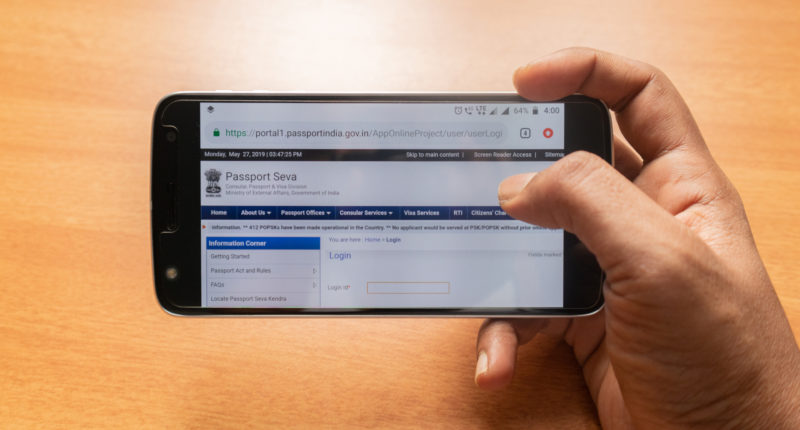We have been seeing how digitisation is taking over every aspect of our lives. Another addition to the list is e-passport. You read it right! If you happen to apply for a new or renewal of passport in 2021, you could get an e-passport, i.e. a passport embedded with a microprocessor chip.
The government has issued about 20,000 of these e-passports on a trial basis. They were issued only from the CPV division at the headquarters of the Ministry of External Affairs for official and diplomatic passports. Now, the government has begun the process of issuing e-passports for all citizens and is on the lookout for an agency to manage the process effectively.
On the official front, the National Informatics Centre and the Ministry of External Affairs have been working together and have issued a Request for Proposal (RFP) to select an agency to handle the set up of IT infrastructure and solution for personalising the e-passports.
It is said that the microprocessor embedded in the passport will make things difficult for those who try to forge and facilitate the quicker immigration process for international passengers. Over the trial period, the e-passports issued are personalised and printed on the booklets.
The IT infrastructure required for offering e-passports is said to be dedicated with a capacity to issue 10,000 to 20,000 e-passports per hour. As of now, it is proposed to set up the IT systems in New Delhi and Chennai.
Also Read: AutoPay Feature is Now Available for Recurring Payments Via UPI
There are 36 passport offices located across the country and all of these offices will be issuing e-passport once the personalisation system is added to the current passport issuance system. In addition, the e-passports are made inline with the International Civil Aviation Organisation (ICAO) standard in order to ensure interoperability without conflicts among different countries.
It is essential to install the new system in place without causing any trouble to the existing system. Also, it is assured that there will be no increase in the time required to issue a passport even during the installation period.
The government has clarified that the IT system to be set up at the data centres located in New Delhi and Chennai will handle any additional load that is generated from the e-passport infrastructure. This is because the e-passport issuance system is looking at a target output of 10,000 e-passports per hour and 50,000 per day. The target output may be scaled up to 20,000 per hour and one lakh per day.
Are you excited about the e-passport initiative? Let’s look forward to an efficient implementation of the new system that adds another feather to the wings of digitisation.
For any clarifications/feedback on the topic, please contact the writer at apoorva.n@cleartax.in





